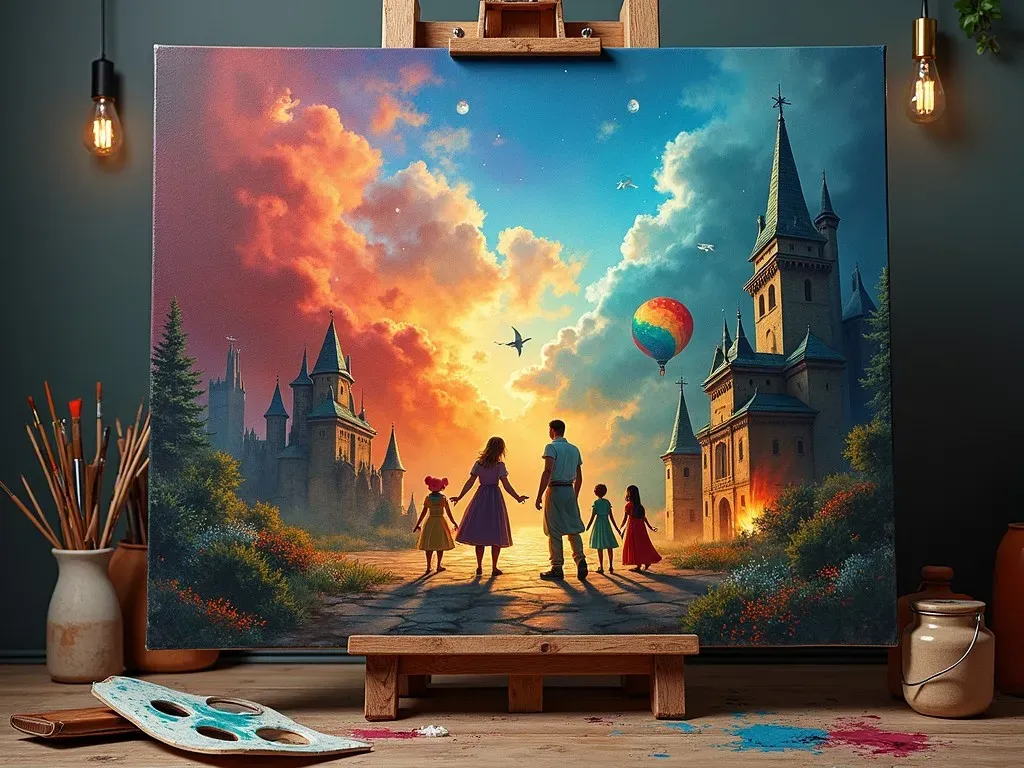Paintings that tell a story are a unique form of expression that allows artists to convey deep narratives through visual means. These masterpieces capture emotions, moments, and tales that resonate with viewers, drawing them into the world portrayed on the canvas. Artistic storytelling can transcend time and culture, making each painting a vessel for experience and thought.
In the world of visual arts, narrative painting is one of the most engaging forms. Artists often utilize symbolism, color, and composition to evoke feelings and narrate stories that are, at times, complex and layered. Below, we delve into the rich storytelling tradition within paintings, exploring notable works and their narratives.
The Importance of Narrative in Art
Narrative paintings hold profound significance for cultural history and personal expression. These artworks provide insight into societal values, historical contexts, and human experiences. By examining the narratives within different pieces, we can uncover fascinating stories that often go unnoticed.
Figures and Facts: The Power of Storytelling in Art
| Year | Artist | Painting | Narrative Focus |
|---|---|---|---|
| 1506 | Leonardo da Vinci | The Last Supper | Biblical historical scene |
| 1665 | Johannes Vermeer | Girl with a Pearl Earring | Mysterious social context |
| 1888 | Vincent van Gogh | The Night Café | Psychological representation |
| 1937 | Pablo Picasso | Guernica | Anti-war statement |
| 1628 | Artemisia Gentileschi | Judith Slaying Holofernes | Feminist narrative |
The tableau above illustrates just a few of the many paintings that tell stories, each uniquely encapsulating narratives from different perspectives and epochs.
Iconic Examples of Paintings That Tell Stories
1. The Last Supper by Leonardo da Vinci
This iconic mural illustrates the moment Jesus announces that one of his disciples will betray him. The composition captures raw emotion, showcasing a myriad of responses ranging from shock to disbelief among the disciples. Da Vinci’s expertise in human expression brings this critical moment in Christian theology to life.
2. Girl with a Pearl Earring by Johannes Vermeer
Often referred to as the “Mona Lisa of the North,” Vermeer’s painting is not just a portrait; it carries a narrative shrouded in mystery. The identity of the girl remains unknown, inciting endless speculation and intrigue about her story and relationship with the artist.
3. Guernica by Pablo Picasso
A large mural created in response to the bombing of the Spanish town during the Spanish Civil War, “Guernica” powerfully depicts the chaos and horror of war. Picasso’s use of monochromatic colors amplifies the pain and suffering portrayed, creating an emotional narrative that conveys the impact of conflict on civilians.
Reference Video
Narrative Techniques in Storytelling Through Paintings
Artists employ various Techniques to craft compelling narratives, including:
- Symbolism: Utilizes images that signify broader meanings or concepts.
- Composition: The arrangement of elements guides the viewer’s eye and enhances storytelling.
- Color Palette: Different colors evoke distinct emotions and moods.
- Character Development: Faces and body language help illustrate individual stories within the broader narrative.
The Role of Context in Understanding Art
Understanding the cultural and historical context surrounding a piece can enrich one’s appreciation for its storytelling aspect. A painting’s narrative can shift dramatically based on one’s perspective as well as the time in which it was created.
| Context Factors | Impact on Interpretation |
|---|---|
| Political Climate | Influences themes of conflict and societal struggle |
| Cultural Background | Provides insight into the values and beliefs of societies |
| Artist’s Life Experience | Personal stories often inform the narrative of their work |
FAQs About Paintings that Tell a Story
What is a narrative painting?
Narrative painting tells a story or conveys a sequence of events through visual means. It invites the viewer to interpret the narrative via symbols, characters, and settings depicted.
How do artists convey emotions in their narratives?
Artists use composition, color, and character expressions to communicate feelings and evoke emotional responses. Each choice they make is deliberate to enhance the storytelling aspect.
Can a painting tell multiple stories?
Yes! A single painting can resonate differently with various viewers, leading to multiple interpretations of its narrative based on personal experiences or knowledges.
Where can I find more information on paintings that tell a story?
For a comprehensive examination of paintings of this nature, consider visiting Stacker’s article on famous paintings and their stories for further exploration.
Are there contemporary painters focusing on narrative art?
Many contemporary artists continue to engage in narrative art, using modern styles and techniques to explore new themes and tell stories relevant to today’s society.
Conclusion
Through thoughtful observation and analysis, paintings that tell a story allow us to journey into the experiences and emotions of others. They serve not only as visual representations but also as narrations of human existence, showcasing the complexities of feelings, history, and culture. By appreciating these narratives, we can build a deeper understanding of art and the myriad stories waiting to be discovered on canvas.
As narratives continue to thrive within the realm of art, one can only imagine the stories yet to be told through paintbrush and canvas. Each painting invites us to listen, to reflect, and to respond—reminding us that every artwork holds a world of stories inside.
